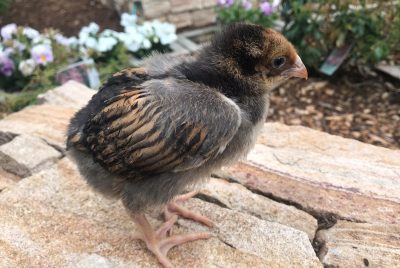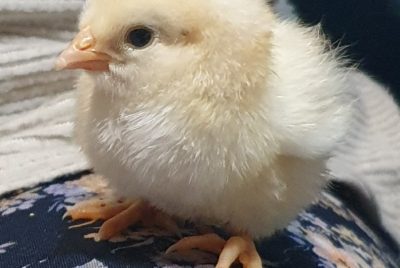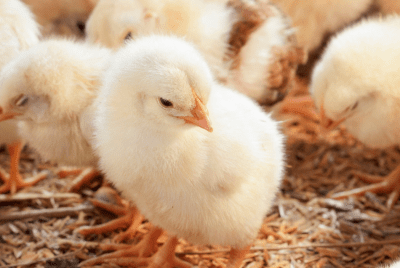Baby Chick Can’t Walk – Splayed Hips
Regarding our fluffy little chicks, their health and well-being are paramount. One issue that means a baby chick can’t walk is splayed hips, which can significantly impact their ability to move and thrive. But fear not, as I am here to guide you through effective methods to help your chicks walk properly again. By following these simple steps, you can ensure that your feathered friends are on the right track to a happy and healthy life!
Key Takeaways:
- Splayed hips can prevent chicks from walking properly, affecting their ability to feed and drink.
- Early intervention is crucial to help chicks with splayed hips regain mobility.
- Use bandages or tape to create support for the chick’s legs, gradually bringing them closer together.
- Provide a slippery surface for the chick to walk on, helping them build strength in their legs.
- Maintain cleanliness to prevent infection in the affected chick’s legs as they recover.
What are Splayed Hips?
Definition and Causes
With splayed hips, also known as “spraddle legs,” the hip joints of the chick are displaced outward, making it difficult for the chick to stand or walk properly. This condition can be caused by a variety of factors, including genetic predisposition, incubation issues, improper hatching positioning, slippery flooring, or vitamin deficiencies. In severe cases, splayed hips can lead to long-term mobility issues if not addressed promptly.
Signs and Symptoms
Signs of splayed hips in chicks include the inability to stand or walk normally, legs extended to the sides rather than underneath the body, and the chick sitting back on its hocks. If left untreated, splayed hips can result in progressive muscle weakening and joint deformation. It is crucial to intervene as soon as you notice any abnormal walking patterns or positioning in your chicks.
It is imperative to act quickly when you suspect splayed hips in chicks, as early intervention can greatly improve the chances of correcting the condition. By providing proper support and implementing corrective measures, you can help the chicks regain their mobility and prevent long-term complications.
Why is it an Emergency?
Some may wonder why splayed hips in chicks are considered an emergency situation. The truth is, chicks with splayed hips face numerous health risks and potential long-term consequences if the condition is not addressed promptly.
Health Risks for Chicks
Chicks with splayed hips are at risk of developing painful sores and injuries on their legs and bodies. These sores can quickly become infected, leading to more severe health issues. Additionally, chicks with splayed hips may have trouble moving around, accessing food and water, and socializing with other chicks, which can impact their overall well-being and development.
Long-term Consequences
Any delay in addressing splayed hips in chicks can result in long-term consequences that affect their quality of life. **Weak** chicks may experience stunted growth, reduced mobility, and even permanent deformities in their legs and hips. This can lead to chronic pain and discomfort as they mature, ultimately affecting their ability to thrive and lead a healthy, happy life.
How to Identify Splayed Hips
Once again, identifying splayed hips in your chicks is crucial for their health and well-being. By recognizing this condition early on, you can take the necessary steps to help them walk properly and avoid further complications. To identify splayed hips, there are a few key visual and behavioral signs to look out for.
Visual Inspection
Any time you observe your chicks struggling to stand, **splayed hips** could be the culprit. A telltale sign is when their legs are splayed out to the sides instead of positioned properly under their bodies. This misalignment can cause difficulty in standing and walking, leading to a wobbly or collapsed posture.
Behavioral Observations
An **important** aspect to consider when trying to identify splayed hips is observing how your chicks move and interact with their environment. **Behavioral** signs may include reluctance to stand or walk, frequent falling or stumbling, or an abnormal gait. **Identifying** these behavioral cues early on can help you address the issue promptly and provide the necessary support to your chicks.
When you notice your chicks displaying **such** behaviors, it’s crucial to take immediate action to prevent any **further** complications. By understanding and identifying the signs of splayed hips early on, you can intervene effectively and ensure the well-being of your **chicks**.
Treatment and Intervention
Despite our best efforts in prevention, sometimes chicks can still develop splayed hips. When you notice this issue, it’s important to take immediate action to help your chicks correct their gait and prevent any further complications.
Brooding Techniques
To assist chicks with splayed hips, it’s crucial to provide them with proper support and padding in their brooding area. Ensure that the bedding is non-slippery and offers good traction to help the chicks stand and walk more easily. Additionally, creating a smaller space for them to move around in can aid in strengthening their leg muscles and improving their mobility.
Exercise and Physical Therapy
Therapy sessions for chicks with splayed hips can include gentle exercises and stretches to improve their muscle strength and coordination. Encourage the chicks to walk short distances multiple times a day to gradually build up their strength. You can also gently manipulate their legs to help them find the correct alignment.
Another technique that can be beneficial is to provide ramps or small steps in their brooding area. This will encourage the chicks to move and exercise their legs without straining themselves.
Nutritional Support
An important aspect of helping chicks with splayed hips is to provide them with proper nutrition. Ensure they are receiving a balanced diet rich in protein, vitamins, and minerals to support their overall growth and development. Supplementing their feed with vitamin and mineral supplements can also aid in their recovery.
Another effective way to support their nutritional needs is by offering them access to fresh water at all times. Proper hydration is crucial for their overall health and well-being.
Treatment
Overall, the key to helping chicks with splayed hips is early detection and prompt intervention. By implementing a combination of proper brooding techniques, exercise, and nutritional support, you can significantly improve the chicks’ mobility and quality of life.
Prevention is Key
Unlike treating splayed hips after they have already developed, preventing this condition in your chicks is much more effective and less stressful for both you and the birds. There are several factors to consider when it comes to preventing splayed hips, including **breeding and genetics** and **environmental factors**.
Breeding and Genetics
To prevent splayed hips in your chicks, it’s crucial to consider the breeding and genetics of your flock. **Selecting breeding stock** with strong, healthy legs and hips can help reduce the likelihood of splayed hips in offspring. Additionally, keeping detailed records of any instances of splayed hips in your flock can help you make informed decisions when breeding for future generations.
Environmental Factors
The environment in which your chicks are raised plays a significant role in preventing splayed hips. **Providing adequate space** in the brooder box to allow for proper movement and exercise can help strengthen their leg muscles and prevent splayed hips. **Using proper bedding** that provides good traction can also help prevent leg issues. **Keeping the brooder box clean and dry** is crucial to prevent infections that can lead to splayed hips. Knowing the **ideal temperature** for your chicks and **avoiding overcrowding** can also help prevent this condition.
Management Strategies
Breeding and managing your flock with splayed hips in mind is crucial in preventing this condition. **Selecting breeding stock** with strong leg conformation and avoiding birds with a history of splayed hips can help prevent passing on this trait to future generations. Additionally, providing a **balanced diet** rich in crucial nutrients can help promote healthy bone and muscle development in chicks.
Factors such as **proper housing and bedding**, **regular exercise**, and **cleanliness** in the brooder environment can all contribute to preventing splayed hips in your chicks. By **taking a proactive approach** to poultry management and ensuring that all aspects of care are addressed, you can help your chicks grow up strong and healthy, with minimal risk of splayed hips.
Common Mistakes to Avoid
Inadequate Brooding
Mistakes can occur when chicks are not provided with adequate brooding conditions. This can lead to splayed hips and difficulties with walking. Ensure that your brooding area is warm enough, and that the chicks have access to proper bedding to prevent slipping and splaying of their legs.
Insufficient Exercise
With insufficient exercise, chicks may not develop the necessary muscle strength to support their bodies properly. Encourage exercise by providing enough space for them to move around and explore. This will help them develop strong legs and prevent splayed hips.
The key to preventing splayed hips in chicks is to provide them with adequate exercise and opportunities to move around. Lack of movement can contribute to muscle weakness and poor development, which may lead to splayed hips. By ensuring that your chicks have enough space to move and play, you can help them develop properly and avoid this common issue.
Nutritional Deficiencies
The nutritional deficiencies in chicks can also contribute to splayed hips. Make sure your chicks are receiving a balanced diet that includes all the necessary vitamins and minerals for healthy growth. Consult with a veterinarian or poultry specialist to ensure your chicks are getting the right nutrients.
Any nutritional deficiencies can have a detrimental effect on your chicks’ health, including their bone development. Providing a well-balanced diet that meets all their nutritional needs is crucial in preventing splayed hips and other health issues. Supplements or fortified feeds may be necessary to address any deficiencies and promote strong, healthy chicks.
Brooding
Brooding chicks properly is crucial in preventing splayed hips. Ensuring they have a warm, clean environment with proper bedding, access to food and water, and enough space to move around will help them develop strong legs and avoid splayed hip issues. By addressing these factors, you can help your chicks walk right from the start.
Final Words
Taking this into account, it’s crucial to check your chicks regularly for any signs of splayed hips or other leg issues. By following the steps outlined in the article How to Spot & Treat a Splay Leg Chick, you can help your chicks walk properly and prevent long-term problems. Keep in mind, providing proper care and attention to your animals is important for their well-being and overall health.
Q: What causes splayed hips in chicks?
A: Splayed hips in chicks are often caused by incubation issues, such as improper temperature or humidity levels, genetics, or nutritional deficiencies.
Q: How can you prevent splayed hips in chicks?
A: To prevent splayed hips in chicks, make sure to provide proper incubation conditions, including maintaining the correct temperature and humidity levels. Additionally, ensure that the parent birds are healthy and receiving a balanced diet.
Q: How can you help chicks with splayed hips?
A: You can help chicks with splayed hips by using methods such as hobbling or splinting the legs together to help realign them. Physical therapy exercises and providing a supportive, non-slippery surface for the chicks to walk on can also aid in their recovery.
Q: Is it important to address splayed hips in chicks?
A: Yes, it is important to address splayed hips in chicks as soon as possible to prevent further complications and to improve the chicks’ quality of life. Untreated splayed hips can lead to difficulty in walking, feeding, and overall health issues.
Q: Can splayed hips be corrected in chicks?
A: With proper care and early intervention, splayed hips in chicks can be corrected. By implementing supportive measures and monitoring the chicks’ progress, you can help them regain proper leg alignment and mobility.



